| It is hardly surprising that Provence is the most popular region in France for tourists and holidaymakers; it is a region that has it all. While some regions have just a great seaside, others have a great natural environment, and others have a great cultural heritage, Provence is a region that has all three. As there is so much to see and do, it would not do justice to list everything but here is a taste of things within an hour of our village of Fontvieille.
Aix-en Provence - the old town is a gem, with its narrow streets and honey-coloured stone. Do not miss the Cathedral of St. Sauveur and the Cezanne Museum. It is known as the city of fountains.
Arles - Arles has classical remains such as the roman arena and ampitheatre, as well as the very famous "Saint Trophime church, and a number of museums. Here you can walk in the footsteps of Vincent Van Gogh and discover the many sites painted by this world famous artist, including "la Maison Jaune", "le Cafe la Nuit" and "Le Jardin de l'hotel Dieu".
Avignon - The old city is clustered within impressive mediaeval walls. The most important monuments are the Palace of the Popes and the Calvet Museum. There is also the famous "Pont d'Avignon", the remnants of a medieval bridge across the Rhone. Across the river, the ruins of the castle of Villeneuve d'Avignon are worth a visit. The centre of Avignon is a UNESCO world heritage site.
Les Baux de Provence - This is a picturesque village built atop the Alpille hills at the edge of the Rhone plain, its royal history is beyond the ordinary. The chateau-fortress complex is fascinating. Among the medieval-style sites are a set of huge seige engines, including; Catapult (Baliste); Covered battering ram (bellier); Trebuchet, 12th-16th century sling-catapult, that had a crew of 60 and fired two 100-kg stones an hour up to 200m. Demonstrations of these implements often occurs.
The Camargue - A major wetland and nature reserve in the Rhone Delta; it is famous for its white horses, water birds including pink flamingos, and for bulls that are bred there The Camargue is one of seven UNESCO biosphere reserves in France.
Cassis - This small port is popular with yachtsman; the coastline east of Cassis is famous for the "Calanques", a series of rocky inlets where limestone cliffs come down to the water's edge.
Fontaine de Vaucluse - A medieval village, the dramatic source of the river Sorgue, which emerges as a full river at the foot of a cliff. It is the fifth largest spring in the world.
Gordes - Reputedly one of the prettiest villages in France, Gordes is a large Provencal village standing on a rocky outcrop above the Calavon valley.
Isle sur la Sorgue - A charming village crossed by the Sorgue river channels. Paddle wheels are dated from the time of its former silk and wool industry. It has the most important Antiquity market in France, after Paris. The Antiquity Market takes place every Sunday. L'Isle sur la Sorgue is one of those places in Provence that one has to see.
Marseille - Marseille is the oldest city in France. A large port city, it boasts a number of monuments, including the Abbaye Saint Victor and the Fort Saint Jean, both near the old port. A must at Marseilles is a boat trip to the Chateau d'If, a historic castle / prison built on a small island in the bay.
Mont Ventoux - the last outcrop of the pre-Alps, rising to 1909 metres, to the east of the Rhone Valley northeast of Carpentras. A road leads to the summit. For much of the year, the snow-capped summit is visible from Avignon.
Nimes - Inescapably linked to two things - denim and Rome. The latter's influence is highly visible in some of the most extensive Roman remains in Europe, while the former (de Nimes), equally visible on the backsides of the populace, was first manufactured in the city's textile mills, and exported to the southern USA in the nineteenth century to clothe slaves.
Orange - Famous for its Roman remains, notably the amphitheatre (used for the annual festival) and the triumphal arch.
Pont du Gard - 11 miles west of Avignon, this dramatic Roman aqueduct is listed as a UNESCO world heritage site.
Saint-Remy de Provence - You will find all the charm of a typically Provencal way of life, strolling along boulevards under the shade of century old plane trees. Wander around the narrow streets discovering squares, fountains, boutiques and art galleries. Roman remains are still here like the Triumphal Arch and Mausoleum, located in a field of olive-trees, landscapes painted several times by Van Gogh. Visit St Paul de Mausole at St Remy de Provence, where Van Gogh was interned from 1889 to 1890 and see a reconstitution of his room.
Saintes-Maries-de-la-Mer is a small village on the coast in the Camargue, with a fortified church: it is famous as a pilgrimage spot for Gypsies or Roms, who come here from all over Europe each year in May, for the festival of Saint Sara.
Millau Viaduct is a cable-stayed road-bridge that spans the valley of the river Tarn near Millau in southern France. It is the tallest bridge in the world with one mast's summit at 343.0 metres.
Lavender Fields are situated throughout the Provence. Visit the the lavender museum at Coustellet. This museum has been telling the story of Provence's lavender since 1901. Lavender blooms mid june to mid august.
Festivals/Markets/wine/cheeses - There are bustling markets in just about every village once a week. There are major Artistic festivals throughout the region and of course there are many vineyards, wineries, olive groves, cafes and restaurants offering splendid food and cheeses.
Walking - there are many walking tracks through the Apilles and other areas. Good information is available from the Office de Tourisme, Fontvielle. |










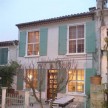
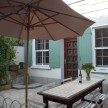





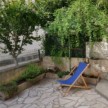


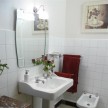
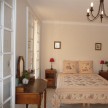
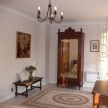

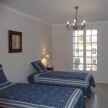


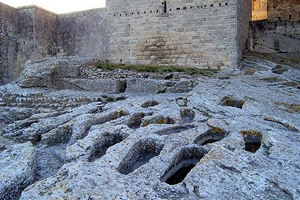

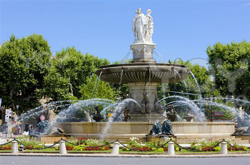 Above: Aix en Provence
Above: Aix en Provence Above: Avignon
Above: Avignon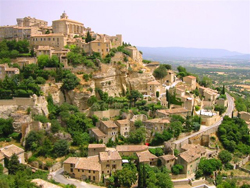 Above: Gordes
Above: Gordes Above: Mont Ventoux
Above: Mont Ventoux Above: Pont Du Gard
Above: Pont Du Gard Above: St Remy de Provence
Above: St Remy de Provence Above: Markets
Above: Markets Above: Isle sur la sorgue
Above: Isle sur la sorgue Above: Marseille
Above: Marseille Above: Nimes
Above: Nimes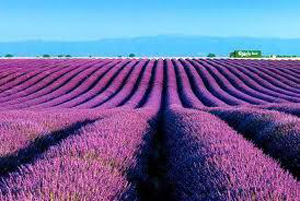 Above: Lavender Fields
Above: Lavender Fields